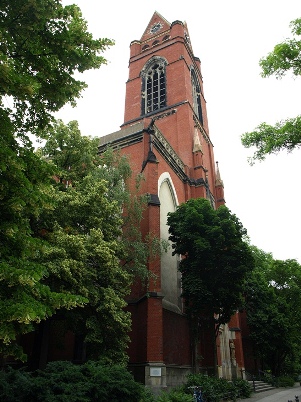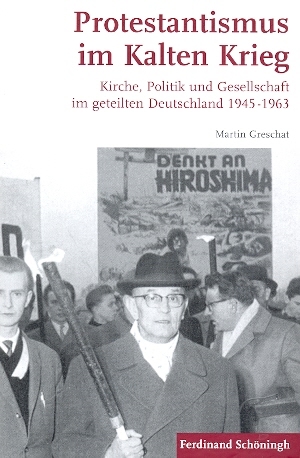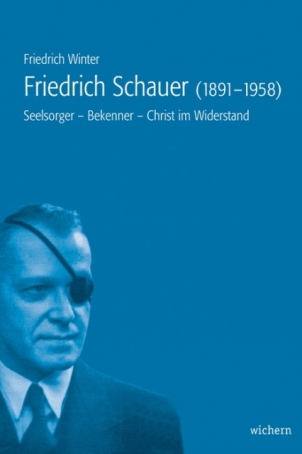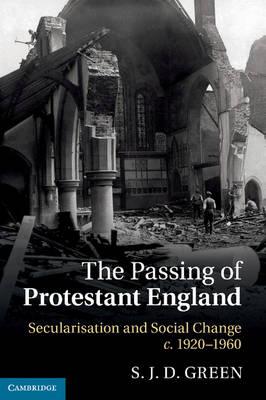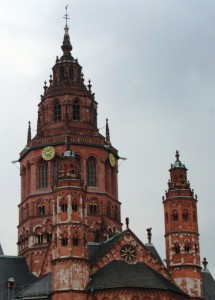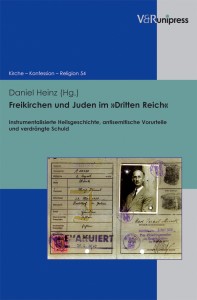ACCH Quarterly Vol. 18, No. 1, March 2012
Article Note: New Research on Cold War Catholicism
Karim Schelkens, “Vatican Diplomacy after the Cuban Missile Crisis: New Light on the Release of Josyf Slipyj,” The Catholic Historical Review 97, no. 4 (October 2011): 679-712.
Marie Gayte, “The Vatican and the Reagan Administration: A Cold War Alliance?” The Catholic Historical Review 97, no. 4 (October 2011): 713-736.
By William Doino Jr., Contributing Editor, Inside the Vatican magazine
Few conflicts have been more intense, or protracted, than the Roman Catholic Church’s battle with Communism. Two years before Karl Marx published his Communist Manifesto (1848), Pope Pius IX referred to “that infamous doctrine of so-called Communism which is absolutely contrary to the Natural Law” and which “would utterly destroy the rights, property and possessions of all men.”
That is still, essentially, the Church’s teaching, though how it’s been expressed and applied over the years has varied, depending on historical circumstances, and the approaches of different popes.
Two articles on what might be called “Cold War Catholicism”covering the immediate post-war era to the collapse of the Soviet Union have recently appeared in The Catholic Historical Review (October, 2011) and are worthy of note.
The first is “Vatican Diplomacy after the Cuban Missile Crisis: New Light on the Release of Josyf Slipyj,” by Karim Schelkens, Secretary of the Center for the Study of Vatican II at the Catholic University of Leuven.
The author draws on notes, diaries and specialized archives to describe the dramatic events leading up to the February 1963 release of Josyf Slipyj, the Ukrainian Greek Catholic archbishop who had been imprisoned by the Soviet Communists for almost twenty years.
Schelkens helpfully provides the historical background. In communion with the Holy See since the Union of Brest in 1595-96, the Ukrainian Greek Catholic Church (UGCC) had long been in tension with the Russian Orthodox Church, especially after the Communists took power and made the latter a virtual instrument of the state. That conflict—held at bay during the Second World War, when a temporary unity prevailed against the Germans—re-emerged with a vengeance as the war came to a close. Schelkens writes:
On April 11, 1945, the Ukrainian Catholic bishops, including Slipyj, were arrested. Most of them were accused of collaboration with Nazi rule and sentenced to forced labor and exile. These draconic measures prompted a strong reaction from Pius XII, expressed in his encyclical Orientales Omnes of December 23, 1945. In it, the Vatican did not only condemn Communism but also openly and specifically attacked Moscow Patriarch Alexis. The situation worsened when on March 8-10, 1946, some 200 Greek Catholic priests were forced to revoke formally their Union with Rome, declare the Brest Union annulled, and convert to Russian Orthodoxy in a sobor set up by the Kremlinall without any say from the Ukrainian Catholic bishops. These dramatic events set the tone for decades to come, and the UGCC would become a “Church of Silence.”
The Church of “Silence” soon became a Church of Martyrs, as many Ukrainian Catholics who were interned by the Communists perished, if they were not tortured and killed beforehand. The full story of this brutal persecution has yet to be told, but to the extent it is remembered, Archbishop Slipyj is a large reason why.
Successor to the legendary Metropolitan Andrey Sheptystky, and a towering figure in his own right, Josyf Slipyj was the soul of the underground Ukrainian Catholic Church, even as he languished in the Siberian Gulag. News of his courageous witness spread, especially after his prison writings managed to circulate. But when the Communist authorities found out, they cracked down even harder, re-sentencing him again.
The death of Stalin in 1953 did not ease the lot of Slipyj or the suppressed UGCC; nor even did Soviet Premier Nikita Kruschkev’s famous “de-Stalinizination” speech of 1956. A fortuitous combination of events, however, led to Slipyj’s release, and it is in recounting this that Schelken excels.
In October of 1962, Pope John XXIII, successor to Pius XII, opened the Second Vatican Council, and with it a new approach toward the world (“aggiornamento”). This included searching new avenues to ease the suffering of Christians under Communist rule, without withdrawing any of the Church’s warnings about Marxist-Leninist ideology. The new approach was described by Msgr. Igino Cardinale, chief of protocol at the Secretariat of the Holy See, as being “ready to engage in relations with any state,” as long as there was a reliable assurance that “freedom for the church and the sanctity of the moral and spiritual interests of its citizens” were respected. Given the deceptions and crimes of the Communists, that was asking a lot, but the Vatican was willing to take risks, in hopes of achieving a greater good.
It didn’t take long to test the new policy. Just a few days after Vatican II opened, the Cuban Missile Crisis broke out and the mediation of the Church was sought. President Kennedy—pulling out all stops to avert a catastrophe—contacted his friend, the author Norman Cousins, who believed the greatest independent force in the world was the papacy. Cousins in turn reached out to his friend, Belgian priest Father Felix Morlion, O.P., who contacted the Holy See, and was assured of the Pope’s willingness to help. The next day, October 24, 1962, John XXIII issued a dramatic appeal to the relevant leaders not to remain deaf to “the cry of humanity.” On October 28, Khrushchev told President Kennedy that the missiles would be withdrawn. Many historians believe Pope John’s public appeal provided Khrushchev with a face-saving way to change course, depicting himself as a savior of world peace, rather than an outfoxed aggressor who blinked. Kennedy explicitly thanked John XXIII for his help.
Many of these same players, as Schelkens reveals, also worked together to obtain the release of Archbishop Slipyj. Thanks to a private intervention by Fr. Morlion with Russian representatives, the indefatigable Cousins was able to interview Khrushchev directly, and serve as an intermediary for the Holy See on behalf of world peace, religious freedom, and Archbishop Slipyj. Dutch Monsignor Johannes Willebrands also took parallel measures with other key diplomatic and religious figures, and the Soviets were surprisingly—though note entirely—cooperative. By early 1963, a decision had been made to release Slipyj on the condition that he would remain in exile and that his freedom would not be exploited by the Church for “anti-Soviet” purposes. In fact, as Schelkens reveals, “the Soviets thought it crucial that it was not to be considered a rehabilitation…. The release was to be regarded as an amnesty and that Slipyj was still considered an enemy of the Soviet government.” The Holy See agreed not to exploit the matter but made no promises about restricting its admonitions against Communism. Willebrands traveled to Russia to receive the Ukrainian archbishop and accompanied him back to Rome, where he was able to participate in the Council. Slipyj’s long-won freedom was further complicated by the fact that Russian Orthodox observers had been invited to attend the Council, as an ecumenical gesture, and accepted. Their presence “deeply shocked” the Ukrainian diaspora bishops who thought that the Holy See had conceded far too much to prelates they considered accessories to the Soviet suppression of the UGCC. But in the large picture, and whatever internal debates remained, the Holy See believed that its strategy had succeeded in accomplishing its ecumenical and political goals, without sacrificing any of its genuine principles.
Schelken’s article is complemented by another essay, “The Vatican and the Reagan Administration: A Cold War Alliance?” by Dr. Marie Gayte, professor of U.S. history at Université du Sud Toulon-Var in France. Here, she examines relations between the Holy See and the United States in the post-war era, culminating with the friendly and often productive but not always unified dealings with the Reagan administration.
At the end of World War II, Gayte relates, there was a convergence of interests between Pope Pius XII and President Harry Truman. The pontiff “well understood the intensity of suffering and persecution inflicted on Catholics under the Soviet regime,” while the President “became convinced of the expansionist aspiration of Stalin’s regime.” Thus, in spite of certain reservations about dividing the world into two blocs, Pius XII “welcomed American aid to Turkey and Greece, as well as the Marshall Plan, granting numerous audiences to congressional representatives. According to J. Graham Parson, who was assistant to Myron Taylor, Truman’s personal representative to Pius XII, ‘it [was not] too far to go in saying that most probably all the top people in the Vatican saw the United States as the only possible salvation of the values which they fundamentally stood for.”
But while Pius XII welcomed American support for shared interests, a careful reading of his pronouncements reveals an independent voice, one that could challenge the assumptions of America’s policymakers. An example of this was Pius XII’s strong warnings against the arms race, and the grave evils that would ensue should war break out between the two superpowers (a theme that would be developed and promulgated at Vatican II, after Pius XII’s passing). Pius was a strenuous opponent of the Soviet empire, and thus longed for its ideological collapse; but he was not (as he has sometimes been portrayed) a reckless anti-Communist who believed in “brinksmanship.”
Neither, for that matter, did his successors, John XXIII and Paul VI. As the international situation grew more intense—with nuclear arms proliferating and Cold War conflicts erupting in the Third World—both maintained that dialogue, rather than warfare, was the best means for obtaining a sound peace and social justice. What emerges clearly from Gayte’s essay is the apprehension papal pronouncements like the encyclicals Pacem in Terris (John XXIII) and Populorum Progressio (Paul VI) caused a succession of American administrations. The tension reached its height during the Vietnam War, which the Holy See did not condemn outright but clearly wanted ended. “The United States,’ writes Gayte, “seems to have been keen to avoid a Vatican portrayal of the United States as morally equivalent to the other belligerents, lest such a representation benefit its opponents in the war and its critics at home. This led to U.S. efforts to influence Vatican pronouncements on several occasions, something of which there is ample evidence in the archives of the Johnson and Nixon administrations.”
When the Vietnam War finally did end, it was not on terms favorable to anyone—except, perhaps, the Communist despots who took over. Even those who strongly opposed the war, in conscience, and saw it as an immoral act of American imperialism, were forced to concede that America’s opponents were hardly the meek, agrarian reformers depicted in some dubious quarters. They were, in fact, ruthless totalitarians who silenced their opponents, often by mass murder. The result was not peace with honor, but “peace with horror,” as one author acidly remarked.
Communism’s brutal record in Southeast Asia created a new sobriety within the Vatican, about the limits of the Christian-Marxist dialogue, and this, in turn, set the stage for the rise of Communism’s ultimate spiritual nemesis, Pope John Paul II. Having lived in Poland under both the Nazis and Communists, he understood the totalitarian mind better than many world leaders, and demonstrated that knowledge in his successful combat with them. He was fortunate to have as an ally Ronald Reagan, whose conservative American presidency has grown more impressive (and popular) over the years. Gayte describes the many areas the two leaders saw eye to eye on—for example, the dangers of a Marxist-driven “liberation theology” and the naïvete of certain peace activists about unilateral disarmament. John Paul told Caspar Weinberger, Reagan’s Secretary of Defense, “you know we are for peace, of course, but we are not for pacifists—unilateral pacifists. We know that is not the way to keep the peace.” Such Christian realism was welcomed by the Reaganites.
At the same time, Gayte properly rejects the simplistic notion of a “holy alliance” conjured up by some journalists. Appreciative as he was toward President Reagan, John Paul II did not hesitate, anymore than previous popes, to distance himself from certain American attitudes and policies the Church found objectionable, particularly the frightful idea that a nuclear war could be fought and won. “Although the pope unambiguously opposed Communism,” writes Gayte, “his pontificate also was one of continuity with his predecessors as far as defense of the third world, peace and social justice were concerned.”
To the extent disagreements did arise, it was because of erroneous American ideas about the Holy See. To their credit, officials in the Reagan administration did eventually learn this, with one candidly admitting, “The Vatican has its own agenda which leads it to statements and actions not always compatible with our policies. …the Vatican’s activities are understandable and follow naturally from the position of the pope as the spiritual leader of the Catholic world. Automatic assumptions in Washington that the Vatican is always on our side are misplaced.” That said, there can be no doubt that the relationship, at its best, did much to bring the Cold War to a largely positive conclusion, even as other dangers have arisen in its wake.
One principle that John Paul II and Ronald Reagan did share was a resounding belief in religious liberty, and the rights of individual conscience—attacks against which continue to arise. Today, as we witness the persecution of minorities in many regions of the world, and see attempts to intimidate religious leaders even in self-proclaimed “free” democracies, a renewed spiritual and political witness in defense of both is needed, now more than ever.

